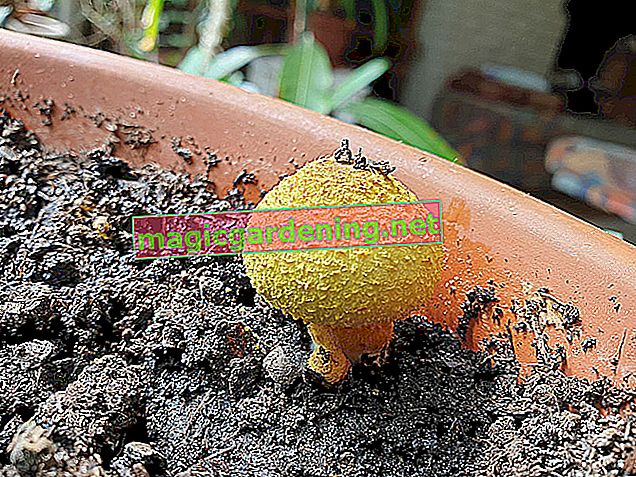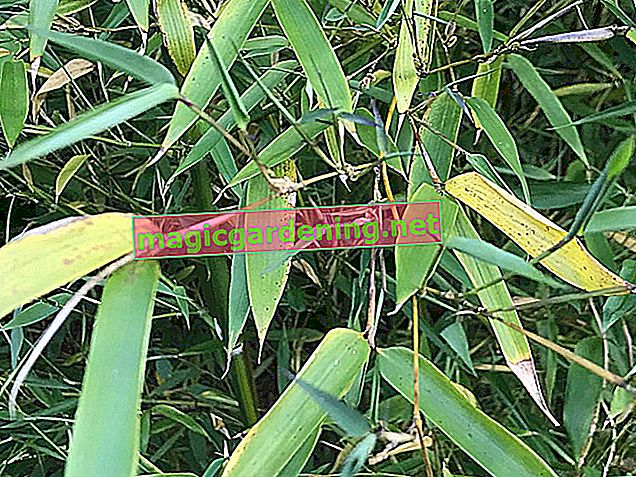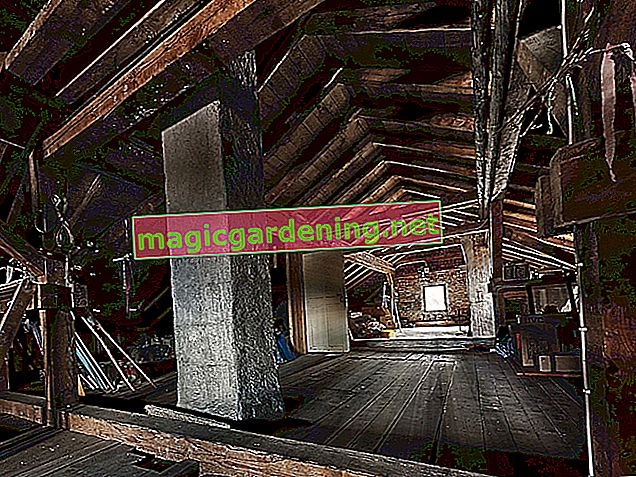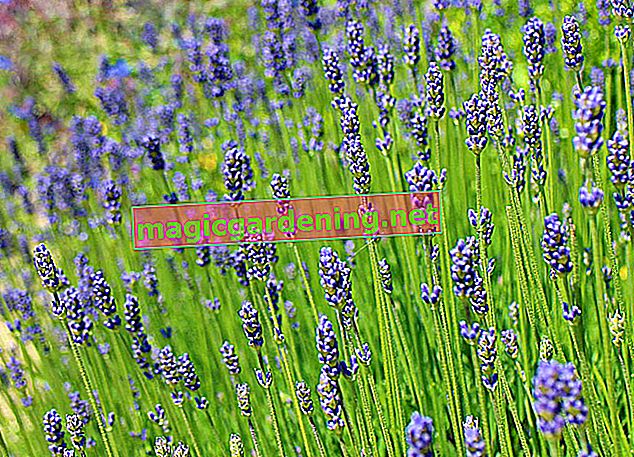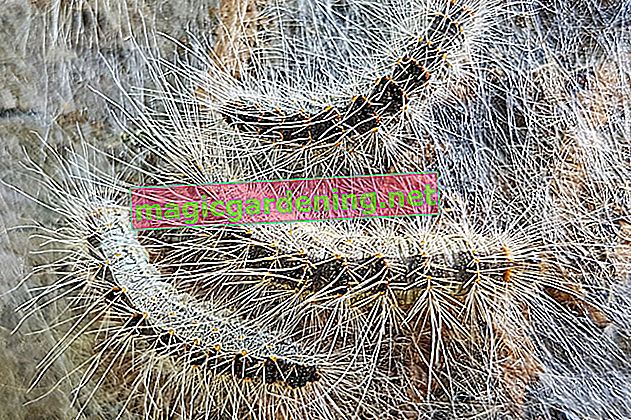
Plant scabiosis correctly
May is the planting time for a scabiosa that has been brought forward or bought ready-made. Welcome the perennial to the garden in full sun, characterized by loose, humus and fresh soil. While the still potted root ball is soaked in water, create the planting pits 35-40 cm apart. Mix in compost, horn shavings and some garden lime (€ 9.46 on Amazon *) or rock flour (€ 14.95 on Amazon *) into the excavation. You plant a potted root ball in the middle of the planting hole and fill it with the substrate up to the lower pair of leaves. After the earth has been pressed and watered, spread a layer of mulch with leaves or bark mulch at the end.
also read
- The ideal care for scabiosis
- Plant and care for a splendid candle
- Plant and care for Diptam
Care tips
The scabies transforms the garden with its natural charm into a summer sea of flowers if it is given the following care:
- Water regularly but moderately in the bed and pot
- Any waterlogging is fatal for the perennial
- Clean off dead flowers every 2-3 days
- Give a start-up fertilization with compost and horn shavings in April / May
- Add a liquid fertilizer to the water in the pot
In autumn, cut the lanceolate, grass-like foliage to just above the ground. Bedding plants receive a protective layer of leaves, straw or brushwood, while the perennial in the pot moves to frost-free winter quarters.
Continue reading
Which location is suitable?
With their colorful flowers, scabioses pay homage to the sun in order to get hold of every single ray of it. So treat the summer shrub to a location in full sun, warm and ideally sheltered from the wind. If the soil is still fresh and moist, nutrient-rich and well-drained, the maintenance effort for the scabious is reduced to a minimum.
What soil does the plant need?
The summer flowering perennial feels comfortable in humus, well-drained soil that is often calcareous. A sandy-loamy, fresh texture of the soil meets the demands of a scabiosis excellently. In the tub and balcony box, the scabious shows its most beautiful side when it can stretch its roots in commercial potting soil enriched with sand, perlite or lava granules.
When is the flowering time?
The duration of the flowering period is in the hands of the gardener. Let scabioses have a free hand and from June a delicate sea of flowers will spread in the bed in beautiful shades of blue, pink or white. The cephalic flower is surrounded by up to 3 rows of petals, most of which thrive in a decoratively corrugated manner. Without your intervention, however, this unique flower show remains. By cleaning up the withered flowers immediately, the flowering period continues seamlessly into October.
Cut scabiosis correctly
With the help of the secateurs, you can motivate the perennial to have a long flowering period that extends over what feels like an eternity. If you consistently cut off the withered flower heads every few days, fresh buds will develop within a short time. A scabiosis cared for in this way shows no signs of fatigue from June until well into autumn. Ideally, you should only cut off the fallen leaves in late winter in order to provide additional protection for the root ball underneath.
Pour the scabies
Water a scabiosa regularly in summer drought, because it feels in good hands in fresh, moist soil. Under no circumstances should the perennial suffer from waterlogging, because the root ball does not survive this dilemma. If the flower thrives in the planter, there is usually more need for watering than in the bed. Check the moisture content of the substrate every day on hot summer days so that you can water immediately if the surface is dry.
Fertilize scabiosis properly
In terms of its nutrient supply, the perennial is modest. You have already dealt with this aspect of maintenance with starting fertilization in spring. A well-measured portion of compost with horn shavings gives scabioses the necessary plant energy for a lush abundance of flowers. In the pot and balcony box, the nutrient reserves are used up within 4-6 weeks after planting. Therefore fertilize the perennial every 4 weeks until August with a liquid preparation for flowering plants.
Overwinter
Aside from a few annual varieties, garden scabies thrive as a perennial perennial. Although the above-ground parts of the plant move in during the winter, the root ball can withstand clinking forest down to - 34 degrees Celsius. For reasons of caution, we still recommend light winter protection for the flower grace by covering the root disc with leaves and brushwood after pruning. Cultivated in a flower box (€ 13.18 at Amazon *) and a bucket, clear the perennial into a frost-free area before winter. To prevent the root ball from drying out, water it from time to time until spring. There is no fertilization during the winter.
Increase scabiosis
It only takes a few steps to multiply the pretty perennial. Experienced hobby gardeners swear by the division of the root ball, since with this vegetative method all the attributes of the mother plant are preserved. In early spring, dig up the root ball in order to cut it into the desired number of segments with a spade or knife. As long as a section has at least 2-3 buds or shoots, it will develop into a magnificent new scabiosis. It is important to note that the root pieces are planted exactly as deep as before and that they are watered abundantly and regularly in the following period.
Scabiosis in the pot
First and foremost, it is the small pigeon-scabiosa that thrive wonderfully in the pot. As a substrate, we recommend a potting soil with a low proportion of peat, which is optimized with sand, perlite or lava granules. A few potsherds over the water drainage prevent dangerous waterlogging. In order to care for the perennial in the pot, these measures are important:
- Water regularly when the potting soil dries up
- Fertilize in the pre-fertilized substrate for the first time after 4-6 weeks at the earliest
- Clean off dead flowers every few days
- Cut back the grassy foliage near the ground with autumn
- Repot in fresh soil in early spring
Throughout the winter, the perennial stays in the frost-free room to be watered a little every now and then. From May, the scabiosa will take its place on the sunny balcony again.
Is scabiosis poisonous?
The vernacular calls scabiosis, among other things, dross. This title results from the fact that some species such as pigeon scabiosis have been used in medicine to alleviate an uncomfortable rash - scabies. Thanks to the valuable ingredients such as essential oils, minerals and vitamins, the leaves have a strengthening effect on the metabolism when used in tea or in salads. Thus, the perennial can justifiably be assigned to medicinal and herbal plants, without any toxic danger for humans and animals.
Nice varieties
- Clive Greaves: A delicate floral beauty with light purple flowers that spread out like rays; Height 90 cm
- Perfecta Alba: The perennial keeps what the variety name promises with pure white flowers; Growth height 70 cm
- Stäfa: A premium variety with two-colored flower heads in light and dark purple nuances; Growth height 80 cm
- Taubenskabiose: Pretty mini variety with double flowers in light blue and white; ideal for the balcony with a height of 25 cm
- Pink Mist: Fancy pigeon skabios, whose pink flowers bloom profusely from June to October; Growth height 25 cm



